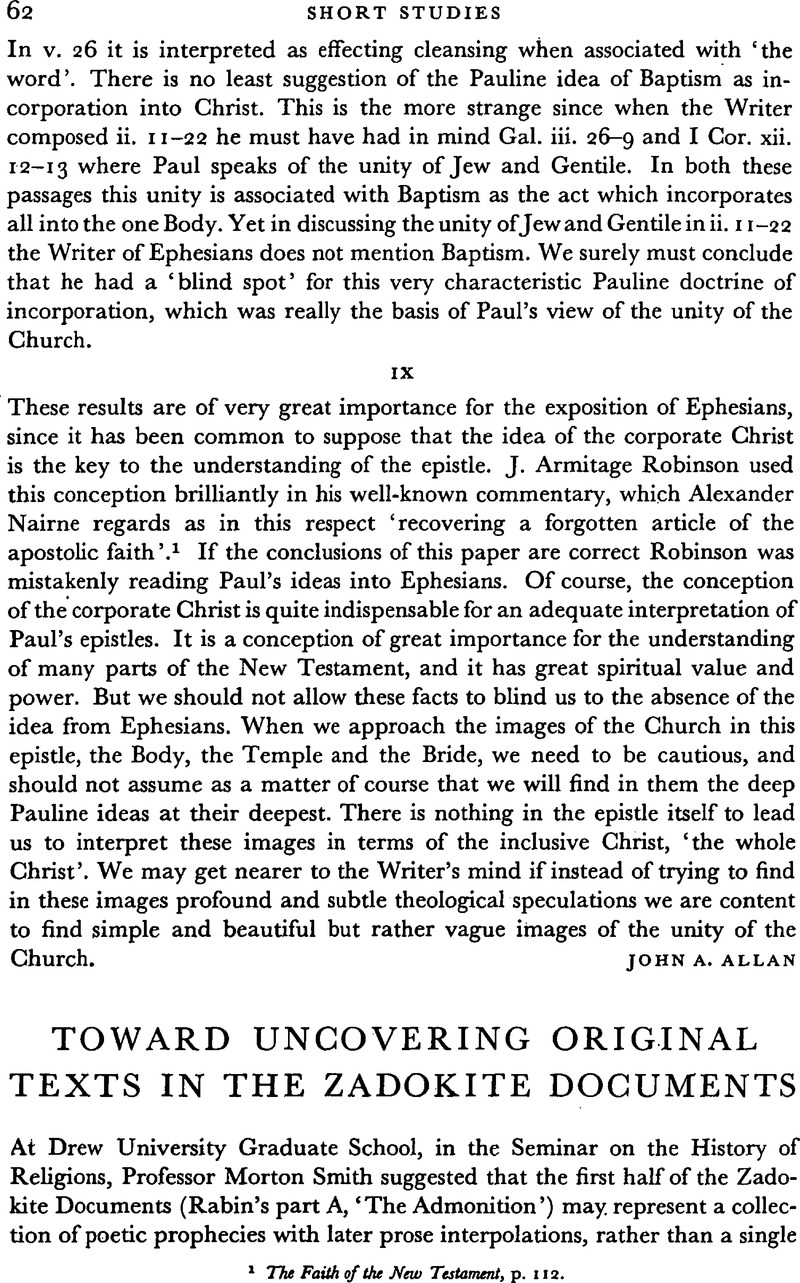Article contents
Toward Uncovering Original Texts in the Zadokite Documents
Published online by Cambridge University Press: 05 February 2009
Abstract

- Type
- Short Studies
- Information
- Copyright
- Copyright © Cambridge University Press 1958
References
page 62 note 1 The Faith of the New Testamen p. 112.Google Scholar
page 63 note 1 The fragments of the Zadokite Documents published by Baillet, M. in Rev. Bibl. LXIII (1956), 513 ff.Google Scholar show that the text known to the Qumran sect differed considerably from that published by Schechter. Those which can be identified come from the later parts of the documents and are, therefore, not directly relevant to the passage here analysed. However, it may be well to remark here that the Qumran discoveries could hardly prove the texts' integrity, though they might disprove it. That is to say: discovery of a Qumran text lacking suspected passages would be a strong argument against the originality of those passages and would furnish a terminus post quem for their insertion. But discovery of a text containing them would merely furnish a terminus ante quem for their appearance in the text, and would leave open the question whether or not they had been inserted. Since it has been plausibly conjectured that the Zadokite Documents were copied (at several removes) from Qumran texts discovered in the Middle Ages, the likelihood is that they represent the text as it already circulated in the Qumran community, and thai discoveries of other copies of this same text will not throw much light on the history of this composition.
page 63 note 2 This transliteration follows the system proposed by Professor Rowley in The Old Testament and Modern Studies.Google Scholar
page 64 note 1 The word in capitals have been added by the present translators.Google Scholar
- 1
- Cited by




